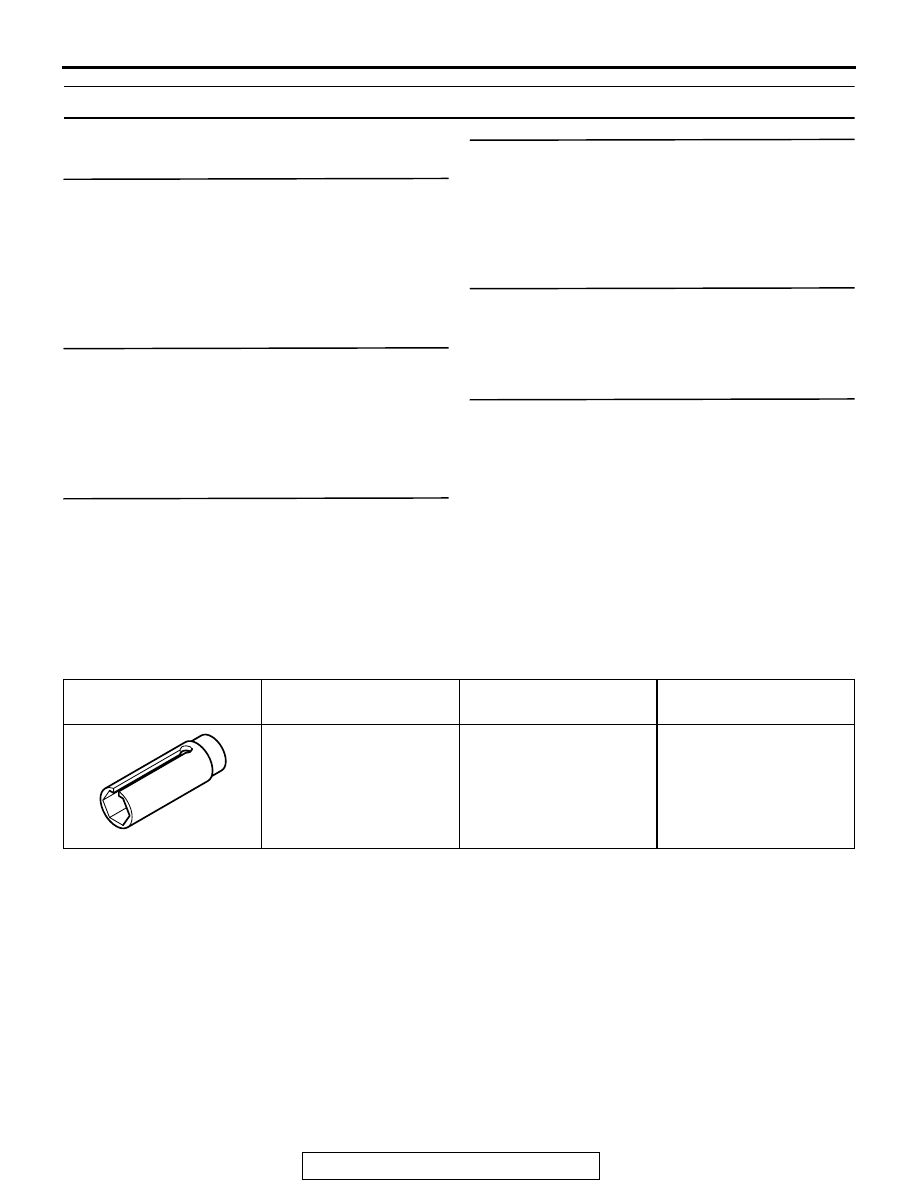Mitsubishi Eclipse. Manual - part 658

SPECIAL TOOL
TSB Revision
INTAKE AND EXHAUST
15-3
INSPECTION PROCEDURE 2: Abnormal Noise
DIAGNOSIS
STEP 1. Start the engine. Have an assistant stay
in the driver’s seat. Raise the vehicle on a hoist.
Have the assistant rev the engine while
searching for exhaust leaks.
Q: Is any abnormal noise generated?
YES :
Go to Step 2.
NO :
This diagnosis is complete.
STEP 2. Check for missing parts in the muffler.
Tap the muffler lightly to check for loose baffles,
etc.
Q: Are there any missing parts in the muffler?
YES :
Replace, then go to Step 1.
NO :
Go to Step 3.
STEP 3. Check the hanger for cracks.
Q: Is the hanger cracked?
YES :
Replace, then go to Step 1.
NO :
Go to Step 4.
STEP 4. Check for interference of the pipes and
muffler with the body.
Q: Are the pipes and muffler interfering with the
body?
YES :
Repair, then go to Step 1.
NO :
Go to Step 5.
STEP 5. Check the heat protectors.
Q: Are any heat protectors loose or damaged?
YES :
Tighten or replace, then go to Step 1.
NO :
Go to Step 6.
STEP 6. Check the pipes, catalytic converters
and muffler for damage.
Q: Are the pipes, catalytic converters and muffler
damaged?
YES :
Replace, then go to Step 1. (For the
removal of the catalytic converter, refer to
GROUP 17
NO :
There is no action to be taken.
SPECIAL TOOL
M1151000600214
TOOL
TOOL NUMBER AND
NAME
SUPERSESSION
APPLICATION
MD998770
Oxygen sensor wrench
MD998770-01 or general
service tool
Heated oxygen sensor
removal and installation